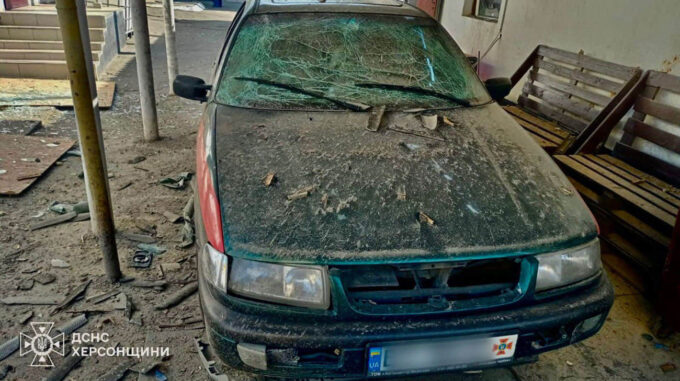Russian occupiers have once again brazenly carried out drone attacks, causing destruction and human casualties in Bilozirka, Kherson region

This time, the perpetrators used FPV drones to target a fire station, resulting in significant damage and physical injuries among rescuers who were performing their duties at the time. According to official data from the Kherson Regional Military Administration and the State Emergency Service of Ukraine, the incident occurred in the town of Bilozirka. Details indicate that three firefighters were injured as a result of flyer-dropped explosives from the drones. Their ages are 24, 31, and 38 years old. The victims sustained various injuries: two suffered shrapnel wounds, one was diagnosed with a concussion, along with a closed head injury. All three were immediately taken to medical facilities for necessary treatment. Photos released by the State Emergency Service clearly show damage to the building, the fire station gates, partially destroyed roof, shattered windows, and a vehicle, which significantly hampers the response capabilities of the emergency services. The incident is a logical continuation of the rising wave of enemy attacks in the region. On June 17, Russian forces used drones to attack the Dnipro district of Kherson, resulting in casualties among local residents and personnel. At that time, 12 people were wounded, but the number later increased to 20, indicating an escalation in the intensity of shelling by the occupiers. Another tragic sign of this crisis was the nighttime air strikes on June 18 — Russian drones deliberately attacked an ambulance and a civilian resident of Kherson. As a result, three people were injured, including two medics. This further highlights the high level of danger faced by local residents and rescuers in occupied or potentially dangerous territories, where the enemy intentionally attempts to destabilize the situation and intimidate the population. These challenging events demonstrate the importance of efforts by Ukrainian forces to protect civilians and maintain the capacity to respond swiftly to any provocations by the enemy, despite ongoing attacks and technological warfare methods, including kamikaze drones. At the same time, each day becomes a struggle for residents and rescuers to preserve lives and property under dangerous conditions of occupation and constant shelling.

